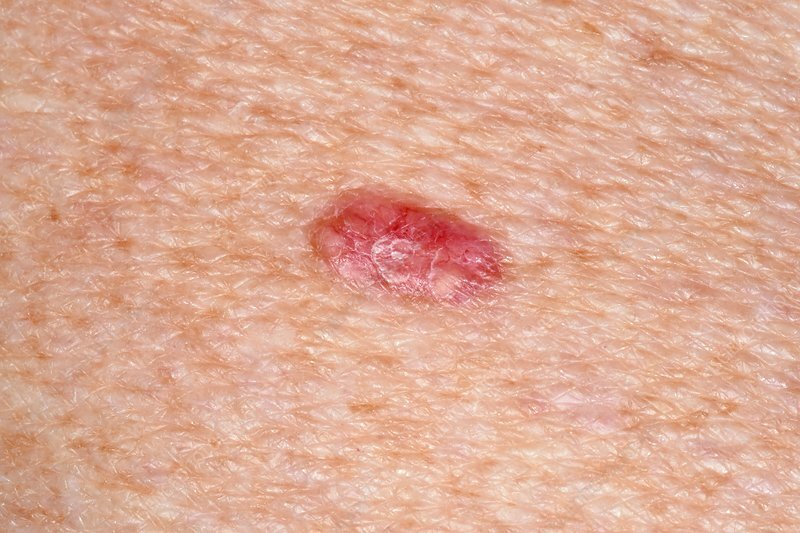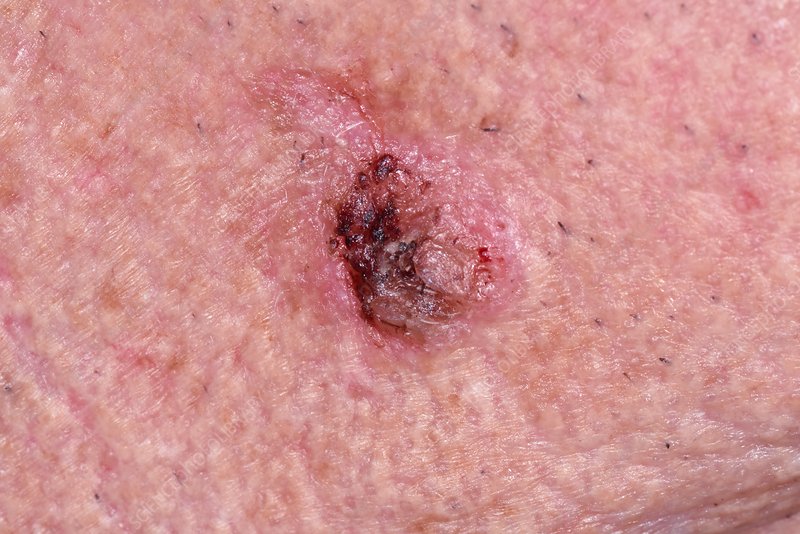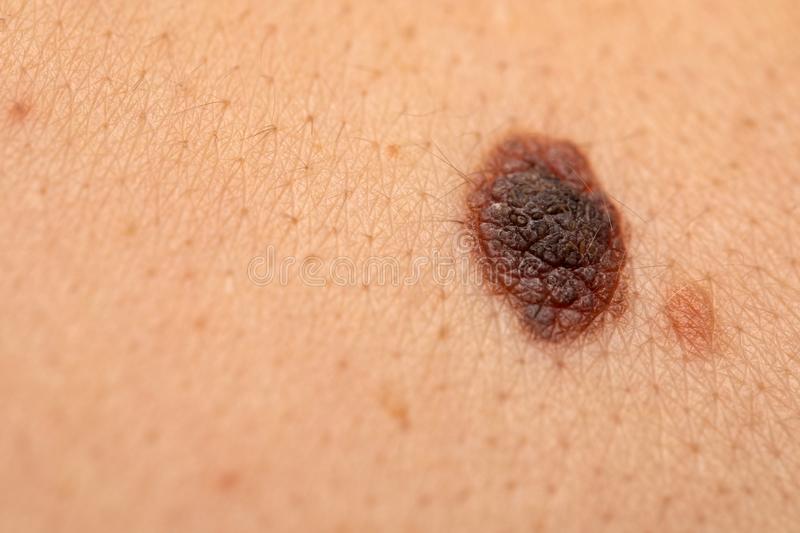This skin cancer forms in the basal cell layer, which creates new skin cells to replace old ones that are no longer viable. It may appear as a bump or flat patch of scaly skin, and is the most common form of skin cancer. Over 1 million cases of basal cell carcinoma are diagnosed each year in the United States. There are many ways of treating basal cell carcinoma, including creams, radiation, electrodessication and curettage (ED&C), simple excision, and Mohs. Your dermatologist and you will work together to help determine which treatment is right for you or your loved one.
While not as prevalent as basal cell carcinoma, squamous cell carcinoma is still very common. It forms in the upper layers of the skin and can spread more rapidly. Squamous Cell Carcinoma, though usually only present locally in the skin, has a higher rate of metastasis than basal cell carcinoma, so it is essential to detect and diagnose it as early as possible. This skin cancer can be also usually be treated surgically via Mohs surgery or excision for an excellent outcome.
While skin cancer seems to have a genetic component, in that parents who develop cancers tend to have a greater likelihood of children also developing them, sun exposure is a significant risk factor. Avoiding sunburns, as well as cumulative sun damage from routine exposure, is recommended for anyone seeking to minimize their risk of developing skin cancer.
In general, try to avoid spending time outdoors during the times when the sun is at its highest point, typically late morning to late afternoon, or roughly 10 a.m. to 4 p.m. If going out in that time, wear clothing—including a hat—that provides cover for the skin and scalp.
Any exposed skin should be protected with sunscreen when going outdoors, no matter the time of day. Apply it at least 20 minutes to half an hour before leaving the house, as that amount of time will allow it to penetrate into the skin and truly work as protection. The sunscreen should have an adequate sun protection factor, ideally SPF 30 or more. Cypress Dermatology offers several skincare products, including sunscreens that are SPF 50+.
A good rule of thumb is to use about a shot glass worth of sunscreen to cover the necessary areas. Do not forget to apply it to bare areas of the scalp, the tops of the ears, and the tops of the feet if open shoes or sandals are being worn.
Also, do not think glass or clouds will protect you from harmful radiation from the sun. Common areas of sun damage include the arms, which are frequently left on arm rests on the inside of vehicle doors, where sunlight beats down on them for long periods of time. Overcast days may seem to block the sunlight, but they really only prevent a clear view of the sun itself. Ultraviolet radiation still travels to the surface of the Earth—and to the surface of your skin and below, where it can harm cells.
While skin cancer has a genetic component, family history cannot be changed. The amount of cumulative sun exposure a person receives, and the intensity of that exposure is a significant modifiable risk factor. Avoiding sunburns, as well as cumulative sun damage from routine exposure, is recommended for anyone seeking to minimize their risk of developing skin cancer.
In general, try to avoid spending time outdoors during the times when the sun is at its highest point, typically late morning to late afternoon, or roughly 10 a.m. to 4 p.m. If going out in that time, wear clothing—including a hat—that provides cover for the skin and scalp.
Any exposed skin should be protected with sunscreen when going outdoors, no matter the time of day. Apply it at least 20 minutes to half an hour before leaving the house, as that amount of time will allow it to penetrate into the skin and truly work as protection. The sunscreen should have an adequate sun protection factor, ideally SPF 30 or more. Cypress Dermatology offers several skin care products, including sunscreens that are SPF 50+.
A good rule of thumb is to use about a shot glass sized (about 2 ounces) sized amount of sunscreen to cover each of the necessary exposed areas. Do not forget to apply it to bare areas of the scalp, the tops of the ears, and the tops of the feet if open shoes or sandals are being worn.
Also, do not think the glass in windows or clouds in the sky will protect you from the harmful radiation of the sun. Extensive cloud cover on overcast days may seem to block the sunlight, but they really only prevent a clear view of the sun itself. Ultraviolet radiation still travels to the surface of the Earth—and to the surface of your skin and below, where it can harm cells and create DNA damage which can eventually lead to skin cancer.


